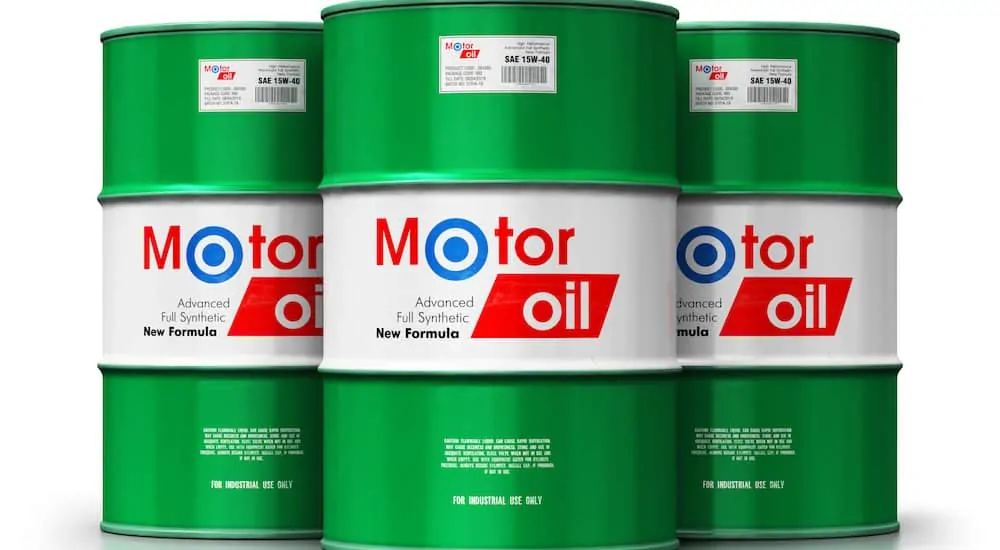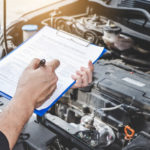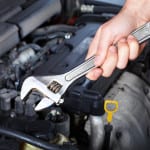Before searching for auto service in Albany, NY, or working on your car yourself, take a look at these five car maintenance myths, and make sure you still aren’t buying into them. Whether it’s because they were just never true, or are now outdated, you need to know that they no longer apply to your vehicle. Well, most vehicles. There are exceptions to one or two of these myths. But for your average daily driving vehicle, you can save yourself some time and money by recognizing these “rules” for the myths they really are.
Sit back and get ready to re-learn a thing or two about your vehicle.
Engine Oil Should be Changed Every 3 months/3,000 Miles

The 3 month/3,000 mile rule is for the benefit of the oil industry and the quick-lube garages only. Consider today’s vehicles, in which people report they are able to drive up to 15,000 miles without worrying about an oil change. That’s, of course, under normal driving conditions, and there is actually a manufacturer-recommended oil-change interval found in your car’s service manual. Typically, it will average somewhere around 7,500 miles. If you follow that rule, rather than the 3,000-mile myth, you will cut down on your oil change expenses by at least half.
How? Simple math, my friend. Let’s say you get your oil changed every 3,000 miles with a time frame of about three months. Each time you get it changed, it costs you $30.00. Now, compare that to changing your oil out for $30.00 every 7,500 miles/6 months. Over a one year period, you only end up spending roughly $60.00 for an oil change, as opposed to $120.00.
But, it’s still important to know that the 3 month/3,000 mile rule didn’t just materialize out of thin air. This is actually considered a severe service plan and applies to vehicles that do way above-average driving on a daily basis, like drive in really polluted environments (dust, dirt, etc.), or vehicles that tow every day. Vehicles like these require an oil change every 3 months/3,000 miles.
Alternatively, this rule would also apply to an old clunker that’s lived its whole life with this rule. If you have an engine that’s used to this frequency of oil changes, drastically changing it suddenly could cause it to run wonky.
So although this isn’t entirely a myth, it’s certainly an outdated rule. Apart from those two exceptions, just refer to your vehicle’s service manual, and follow the oil change guidelines found there.
Warm Up Your Car for Several Minutes Before Driving
Another outdated rule that’s still circulating is letting your car warm up for several minutes before driving it. With the modern technology in today’s engines, the best way to warm up your engine is by actually driving it. You don’t want to romp on the gas pedal or rev it in the first few miles, but the more the engine works, the quicker it warms up and provides you with better performance and fuel mileage. This is backwards from what it used to be, and with older cars the engine needed to have several minutes of idling in order to let the fluids get to where they needed to go in the colder weather.
Again, if you have an older car then you’ll still need to let it warm up for a few minutes before driving in colder weather. But a car from 2016 doesn’t require that idling time, and all you are doing is wasting your time and money.
Premium Fuel is Better for my Non-Premium Car
Unlike the last two myths that were once true, but are now outdated, this one is a straight-up myth. Premium fuel is not better for a non-premium car in any way, shape, or form. Do you think the people who drive the premium vehicles enjoy paying almost half a dollar more in gas than you? Of course not! They do it because they have to. If you are running around in a Toyota Corolla or any other type of “Average Joe” vehicle, just use regular gas.
The premium fuel doesn’t change how the engine runs, and doesn’t improve the performance of your vehicle at all. If you’ve been purchasing premium fuel for your non-premium car, don’t worry, your vehicle isn’t damaged — but your bank account is. Essentially, putting premium fuel in a vehicle that doesn’t need it is the same as drinking bottled water because you think it contains more nutrients than the water out of a well. While you might think it tastes better, bottled water has no added benefits over well water, and your body can’t tell the difference between the two. At the end of the day, your body is just happy that it’s being hydrated.
Premium fuel has a higher octane rating, and is typically used in hotter-running, high-compression engines because the higher octane rating helps prevent pre-ignition problems in those types of engines.
A Battery Will Recharge Quickly After a Jump Start
Again, another myth. For those that don’t know, a jump start is when one car battery is hooked up to a dead car battery, and the charge from the first car battery gives the dead battery a shot of juice. If nothing else is wrong, that battery will take that initial shot of electricity, and the car will run properly again.
So for whatever reason, someone took that to mean that a battery will recharge quickly after a jump start — which is utterly bollocks. For a battery to recharge on its own, it will take several hours after being jumped to reach the proper charge, which only makes sense, since a normal and healthy car battery will take a while to die if you leave your lights on. So, it’s only natural that the recharge time takes almost just as long.
Therefore, if you get jumped on the side of the road, go home and hook your battery up to a charger. That way, you aren’t driving around with a battery that barely has a charge, and is in danger of dying again.
Tire Pressure Needs to be Filled to the PSI on the Sidewall
Not nearly as significant as the other myths on this list, but this one is still a common misconception, nonetheless. Even I grew up under the impression that you are supposed to fill your tires up to the PSI rating on the sidewall of the tire. That’s actually the max PSI your tire can hold. While it’s not dangerous or harmful if you fill it up to that PSI, it’s not necessarily required. On the inside of the door jamb, or in the owner’s manual, you can actually find the manufacturer’s recommended amount of PSI to fill your tire.
Since tires aren’t necessarily make and model specific, it only makes sense that they would need to adapt to what type of vehicle they equip. After all, the PSI on an 16” tire fitted on a sedan is going to be different than one fitted on an older truck since the sedan won’t be carrying as much weight as the truck. Therefore, the PSI needs to be optimized depending on the vehicle it’s equipping. Even between a compact sedan and a full-size sedan, the difference in the recommended PSI on the same tire might surprise you.
There you have it – five car myths that are still circulating, but are outdated, based on old information that no longer applies to newer vehicles. Whatever the case, hopefully you can start saving some time and money by cutting these out of your maintenance routine and adhering to the proper suggestions provided by the manufacturer of your vehicle.








